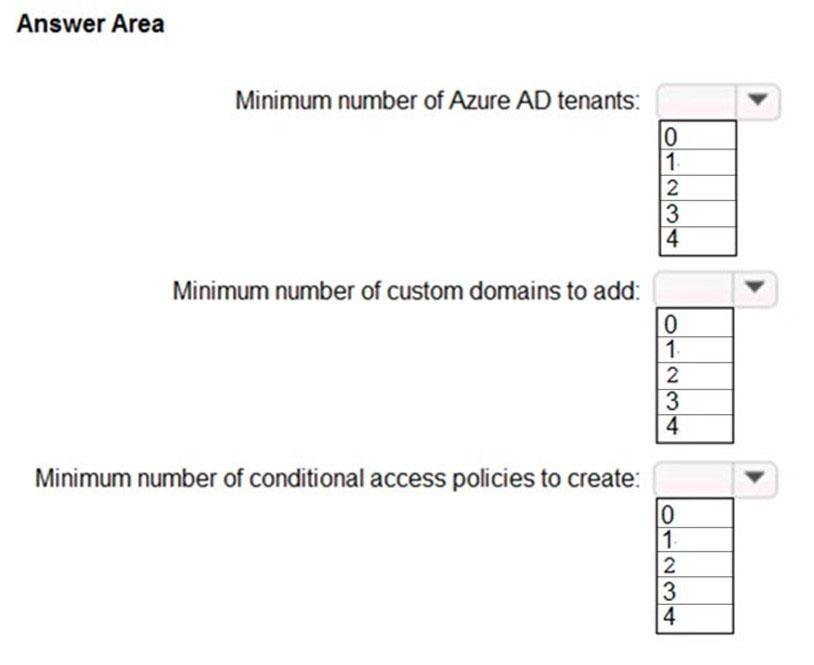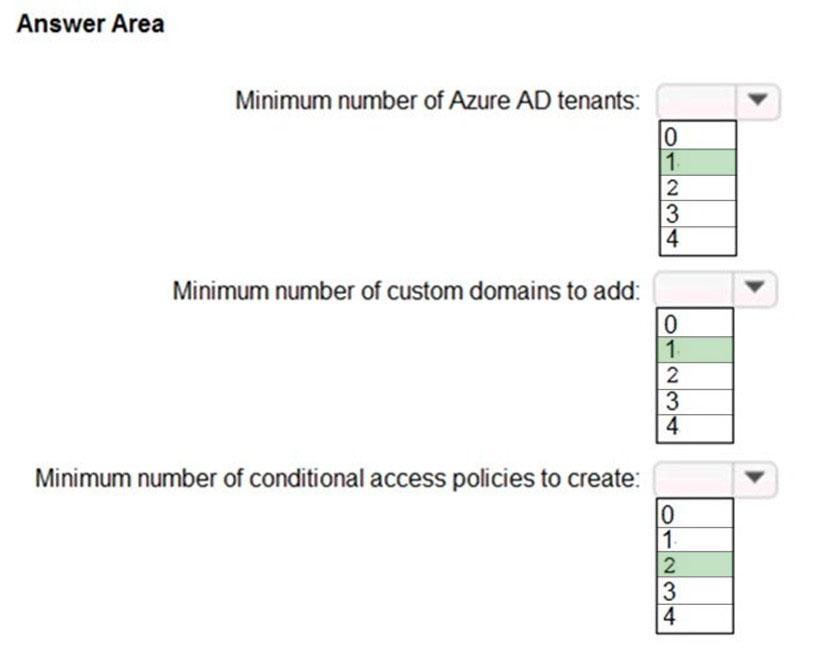Case Study –
This is a case study. Case studies are not timed separately. You can use as much exam time as you would like to complete each case. However, there may be additional case studies and sections on this exam. You must manage your time to ensure that you are able to complete all questions included on this exam in the time provided.
To answer the questions included in a case study, you will need to reference information that is provided in the case study. Case studies might contain exhibits and other resources that provide more information about the scenario that is described in the case study. Each question is independent of the other questions in this case study.
At the end of this case study, a review screen will appear. This screen allows you to review your answers and to make changes before you move to the next section of the exam. After you begin a new section, you cannot return to this section.
To start the case study –
To display the first question in this case study, click the Next button. Use the buttons in the left pane to explore the content of the case study before you answer the questions. Clicking these buttons displays information such as business requirements, existing environment, and problem statements. If the case study has an All Information tab, note that the information displayed is identical to the information displayed on the subsequent tabs. When you are ready to answer a question, click the Question button to return to the question.
Overview –
Fabrikam, Inc. is an engineering company that has offices throughout Europe. The company has a main office in London and three branch offices in Amsterdam, Berlin, and Rome.
Existing Environment: Active Directory Environment
The network contains two Active Directory forests named corp.fabrikam.com and rd.fabrikam.com. There are no trust relationships between the forests.
Corp.fabrikam.com is a production forest that contains identities used for internal user and computer authentication.
Rd.fabrikam.com is used by the research and development (R&D) department only. The R&D department is restricted to using on-premises resources only.
Existing Environment: Network Infrastructure
Each office contains at least one domain controller from the corp.fabrikam.com domain. The main office contains all the domain controllers for the rd.fabrikam.com forest.
All the offices have a high-speed connection to the internet.
An existing application named WebApp1 is hosted in the data center of the London office. WebApp1 is used by customers to place and track orders. WebApp1 has a web tier that uses Microsoft Internet Information Services (IIS) and a database tier that runs Microsoft SQL Server 2016. The web tier and the database tier are deployed to virtual machines that run on Hyper-V.
The IT department currently uses a separate Hyper-V environment to test updates to WebApp1.
Fabrikam purchases all Microsoft licenses through a Microsoft Enterprise Agreement that includes Software Assurance.
Existing Environment: Problem Statements
The use of WebApp1 is unpredictable. At peak times, users often report delays. At other times, many resources for WebApp1 are underutilized.
Requirements: Planned Changes –
Fabrikam plans to move most of its production workloads to Azure during the next few years, including virtual machines that rely on Active Directory for authentication.
As one of its first projects, the company plans to establish a hybrid identity model, facilitating an upcoming Microsoft 365 deployment.
All R&D operations will remain on-premises.
Fabrikam plans to migrate the production and test instances of WebApp1 to Azure.
Requirements: Technical Requirements
Fabrikam identifies the following technical requirements:
Website content must be easily updated from a single point.
User input must be minimized when provisioning new web app instances.
Whenever possible, existing on-premises licenses must be used to reduce cost.
Users must always authenticate by using their corp.fabrikam.com UPN identity.
Any new deployments to Azure must be redundant in case an Azure region fails.
Whenever possible, solutions must be deployed to Azure by using the Standard pricing tier of Azure App Service.
An email distribution group named IT Support must be notified of any issues relating to the directory synchronization services.
In the event that a link fails between Azure and the on-premises network, ensure that the virtual machines hosted in Azure can authenticate to Active Directory.
Directory synchronization between Azure Active Directory (Azure AD) and corp.fabrikam.com must not be affected by a link failure between Azure and the on-premises network.
Requirements: Database Requirements
Fabrikam identifies the following database requirements:
Database metrics for the production instance of WebApp1 must be available for analysis so that database administrators can optimize the performance settings.
To avoid disrupting customer access, database downtime must be minimized when databases are migrated.
Database backups must be retained for a minimum of seven years to meet compliance requirements.
Requirements: Security Requirements
Fabrikam identifies the following security requirements:
Company information including policies, templates, and data must be inaccessible to anyone outside the company.
Users on the on-premises network must be able to authenticate to corp.fabrikam.com if an internet link fails.
Administrators must be able authenticate to the Azure portal by using their corp.fabrikam.com credentials.
All administrative access to the Azure portal must be secured by using multi-factor authentication (MFA).
The testing of WebApp1 updates must not be visible to anyone outside the company.
HOTSPOT (Drag and Drop is not supported)
To meet the authentication requirements of Fabrikam, what should you include in the solution? To answer, select the appropriate options in the answer area.
NOTE: Each correct selection is worth one point.
Hot Area:

- See Explanation section for answer.
Answer(s): A
Explanation:

Box 1: 1
One single Azure AD tenant is needed as only the Corp tenant is migrated.
Box 2: 1
Box 3: 2
One conditional access policy for Multi-Factor Authentication (MFA) will be used for administative access, and a second conditional access policy in order to prevent external access.
Reference:
https://docs.microsoft.com/en-us/azure/active-directory/conditional-access/howto-conditional-access-policy-location https://docs.microsoft.com/en-us/azure/active-directory/conditional-access/howto-conditional-access-policy-admin-mfa